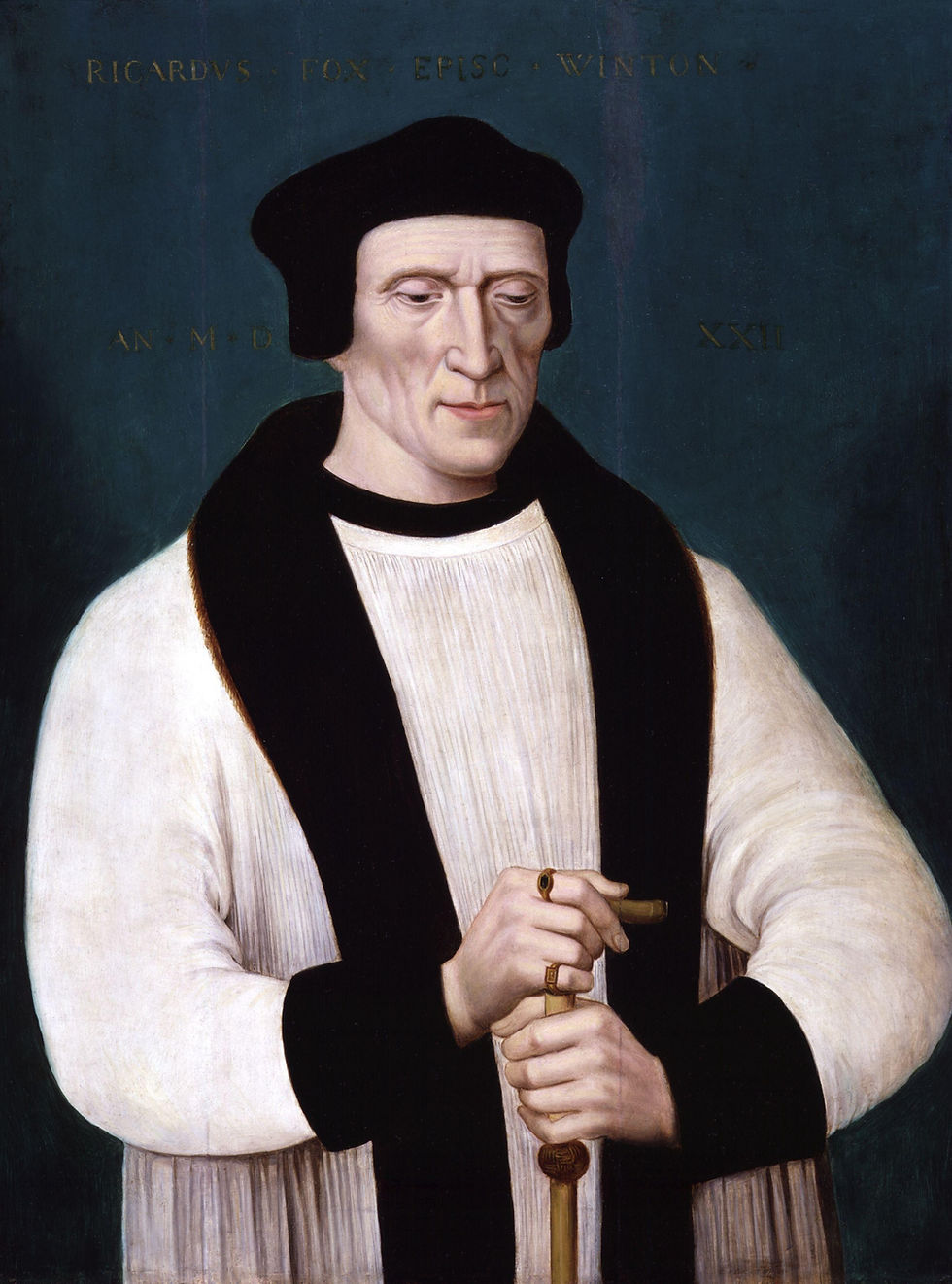Royal Roots in Farnham: Uncovering Connections from Park to Palace
- Abi Cox
- Jun 9
- 3 min read
Nestled on the picturesque Surrey–Hampshire border, Farnham Castle, the adjoining Bishop’s Palace, and the surrounding parkland have long drawn royal visitors. Once seen merely as a convenient stopover en route from London to Winchester and beyond, Farnham soon became a favoured retreat where monarchs didn't just pass through—they lingered and left their mark. Today, we invite you to journey through a legacy shaped by generations of kings, queens, and their courts.

Historical Royal Patronage
Royal patronage is woven into Farnham’s very fabric. Although Farnham Castle primarily served as the residence of the Bishops of Winchester, its strategic location and luxurious setting made it an irresistible haven for royalty. Monarchs such as King John, King Henry VIII, Mary Tudor, and Queen Elizabeth I found in Farnham both a welcome retreat and a showcase of power, refined taste, and cultural sophistication. These visits were more than mere stops; they were grand displays of status and influence.
A Celebration of Culture and Architecture
Royal guests to Farnham were treated to lavish banquets, grand processions, and spirited hunts in the nearby parklands. This seamless blend of ceremonial splendour, leisure, and politics not only enhanced Farnham’s reputation but also spurred architectural innovations. In its heyday, the Bishop’s Palace boasted spacious reception halls, an exquisite art collection, and expansive hunting grounds—all designed to impress and accommodate regal visitors. Heraldic crests and motifs echoed throughout, underscoring the patronage and prestige that only royalty and high ecclesiastical dignitaries could command.
A Passion for the Hunt
Hunting was a cherished pursuit for royalty, and Farnham’s vast, unspoiled land provided the perfect backdrop. During medieval and Tudor times, it was common to ride and hunt across extensive tracts from Windsor to Farnham. In 1554, Mary I spent three weeks here before her wedding to Philip II, during which she received hunting greyhounds and hawks as tokens of esteem. Queen Elizabeth I also enjoyed extended stays, at times commandeering the castle for an entire summer—whether for leisure, politics, or even a discreet escape.

Royal Connections Through the Ages
The Stuarts were equally taken with Farnham’s bounty. In 1608, King James I leased the castle from Bishop Thomas Bilson for use as a hunting lodge—later sublet amid lingering anxieties over the 1605 Gunpowder Plot. After the turmoil of the Civil War, Bishop George Morley, chaplain to Charles II, invested heavily in repairs and renovations, ensuring the estate remained fit for royal visitors. Even in the 19th century, Queen Victoria graced Farnham with her presence, punctuating her journeys from London to Winchester with delightful interludes amid Farnham’s storied surroundings.
Farnham: A Living Tapestry of Regal Legacy
Farnham is more than a collection of historic buildings—it’s a town where every cobblestone and quaint alleyway resonates with a regal past. Landmarks like Farnham Castle and the Bishop’s Palace are not only monumental relics but also living stages where history unfolded. They are the silent storytellers of grand ceremonies, quiet plotting, and the everyday rhythm of noble life. Today, the echoes of those royal encounters continue to inspire local unity and pride, making Farnham a vibrant keeper of its illustrious heritage.
The relationship between Farnham and the British monarchy spans nearly a thousand years, revealing an evolving tapestry of power, prestige, and cultural influence. Beyond evoking nostalgia, the royal connection at Farnham is an enduring legacy that is deeply intertwined with local culture and tourism. Guided tours of the Bishop’s Palace trace the footsteps of former monarchs and their retinues, inviting visitors to experience firsthand the spaces where history, ritual, and leisure once converged.
So, why not step into the past? Discover the corridors where Church and royalty converge, follow the footsteps of kings and queens, and let these historic walls share their timeless tales with you.




Comments